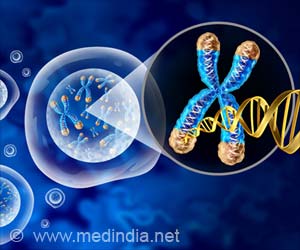Plasma-derived cell-free DNA and circulating tumor DNA are promising biomarkers for early detection of urothelial carcinoma.
- cfDNA and ctDNA are non-invasive biomarkers for bladder cancer detection and monitoring
- ctDNA analysis can provide real-time insights into tumor dynamics and treatment response
- Personalized treatment plans can be tailored based on ctDNA levels and molecular profiles
Advancements in Urothelial Cancer Care: Optimizing Treatment for Your Patient
Go to source). Consequently, the American Urological Association (AUA) advocates for meticulous surveillance during and post-treatment, primarily through cystoscopy or imaging tests, which, although effective, can be invasive and costly. This has spurred interest in identifying supplementary methods for BC surveillance, with plasma-derived cell-free DNA (cfDNA) and circulating tumor DNA (ctDNA) emerging as promising biomarkers.
ctDNA analysis can detect bladder cancer recurrence up to 6 months before traditional imaging methods! #bladdercancer #liquidbiopsy’
What are cfDNA and ctDNA?
Cell-free DNA (cfDNA) consists of DNA fragments released into the bloodstream from dying cells, while circulating tumor DNA (ctDNA) is a subset of cfDNA that originates from apoptotic or necrotic tumor cells and bears tumor-specific mutations. The analysis of cfDNA and ctDNA offers a non-invasive means to detect and characterize the molecular attributes of tumors, potentially transforming cancer diagnosis and monitoring.Mechanisms of Release
The release of cfDNA into the bloodstream occurs through apoptosis, necrosis, and active secretion. In cancer patients, ctDNA levels can reflect the tumor burden and provide a real-time snapshot of tumor dynamics.
cfDNA and ctDNA in Bladder Cancer Management
Early Detection
Research underscores the potential of cfDNA and ctDNA as early detection tools for BC. Their presence and concentration in blood samples can reveal the existence of malignancies before they are detectable through traditional imaging or cystoscopy. Early detection is crucial for improving patient outcomes and reducing the overall burden of disease.
Prognostication
ctDNA serves as a prognostic biomarker, offering insights into both early- and late-stage BC. Elevated levels of ctDNA correlate with poorer prognosis and higher risk of recurrence. This information is invaluable for risk stratification, guiding clinical decisions, and tailoring treatment plans to individual patient profiles.
Monitoring and Surveillance
The high recurrence rate of BC necessitates rigorous monitoring. ctDNA analysis can complement existing surveillance methods by providing a non-invasive alternative to cystoscopy and imaging. It allows for the detection of minimal residual disease and early signs of recurrence, facilitating timely interventions and personalized treatment adjustments.
Personalized Treatment
- Risk Stratification: Prior to major surgical interventions, ctDNA analysis can aid in risk stratification. Patients with high ctDNA levels may require more aggressive treatment approaches, while those with lower levels can potentially avoid overtreatment. This stratification ensures that each patient receives the most appropriate level of care based on their specific risk profile.
- Assessing Treatment Response: ctDNA can be used to monitor response to therapy, particularly in the context of immunotherapy and chemotherapy. Changes in ctDNA levels during treatment can indicate whether a patient is responding positively, allowing for dynamic adjustments to the therapeutic regimen. This real-time feedback is critical for optimizing treatment efficacy and minimizing adverse effects.
- Neoadjuvant Chemotherapy: In upper-tract UC, ctDNA has shown promise as a biomarker for neoadjuvant chemotherapy. It can help identify patients who are likely to benefit from this pre-surgical treatment, enhancing the overall success rate and improving survival outcomes.
Challenges and Future Directions of ctDNA
Limitations of ctDNA: Despite its potential, ctDNA analysis faces several limitations. Current detection methods need refinement to enhance sensitivity and specificity, ensuring accurate identification of BC-specific mutations. Furthermore, ctDNA levels can be influenced by non-cancerous conditions, necessitating robust validation to avoid false positives.To fully realize the potential of ctDNA in BC care, further prospective, randomized trials are essential. These studies will elucidate the clinical utility of ctDNA, validate its use across diverse patient populations, and establish standardized protocols for its integration into routine clinical practice.
Plasma-derived cfDNA and ctDNA represent a significant advancement in the early detection, prognostication, and personalized treatment of urothelial carcinoma. Their non-invasive nature, coupled with the ability to provide real-time insights into tumor dynamics, positions them as valuable tools in the ongoing effort to improve bladder cancer outcomes. While challenges remain, ongoing research and technological advancements hold promise for the widespread adoption of cfDNA and ctDNA in clinical settings, ultimately enhancing the precision and effectiveness of BC management.
Reference:
- Advancements in Urothelial Cancer Care: Optimizing Treatment for Your Patient - (https://ascopubs.org/doi/10.1200/EDBK_432054)
Source-Medindia












